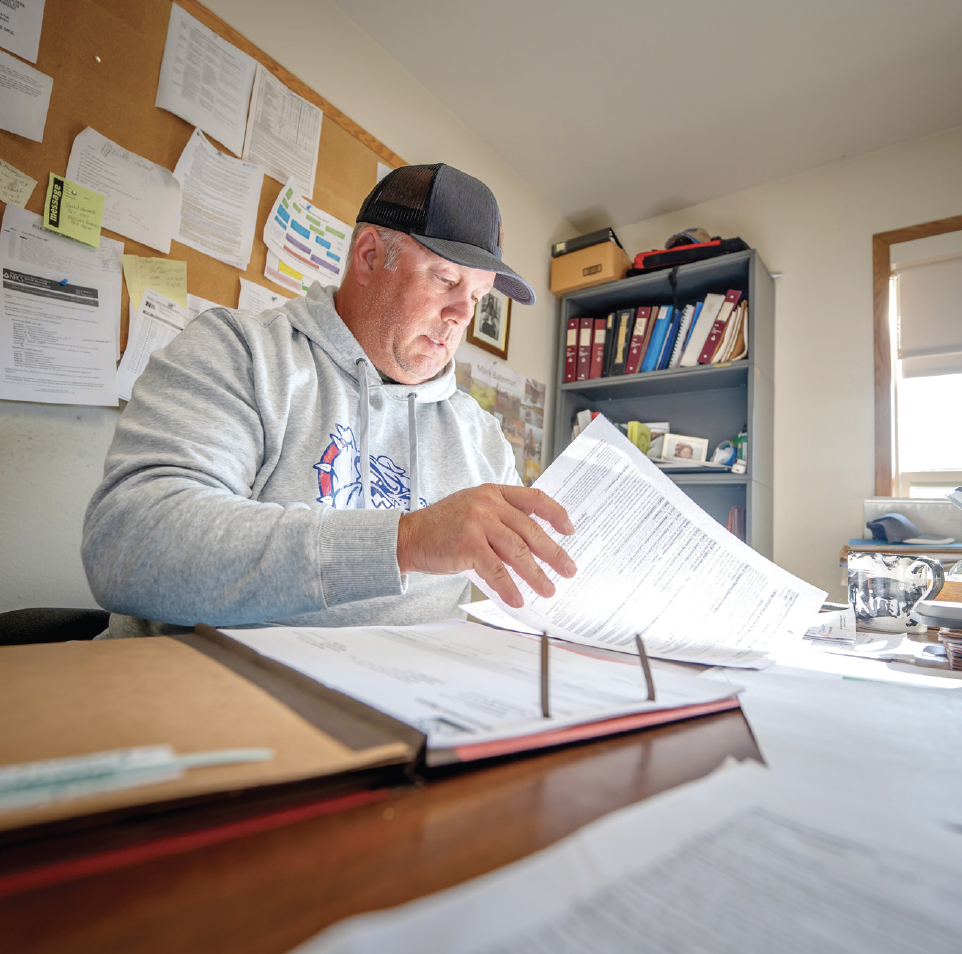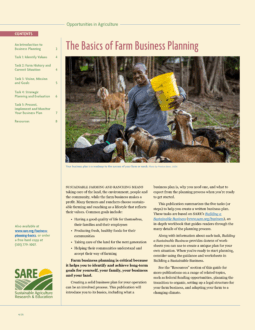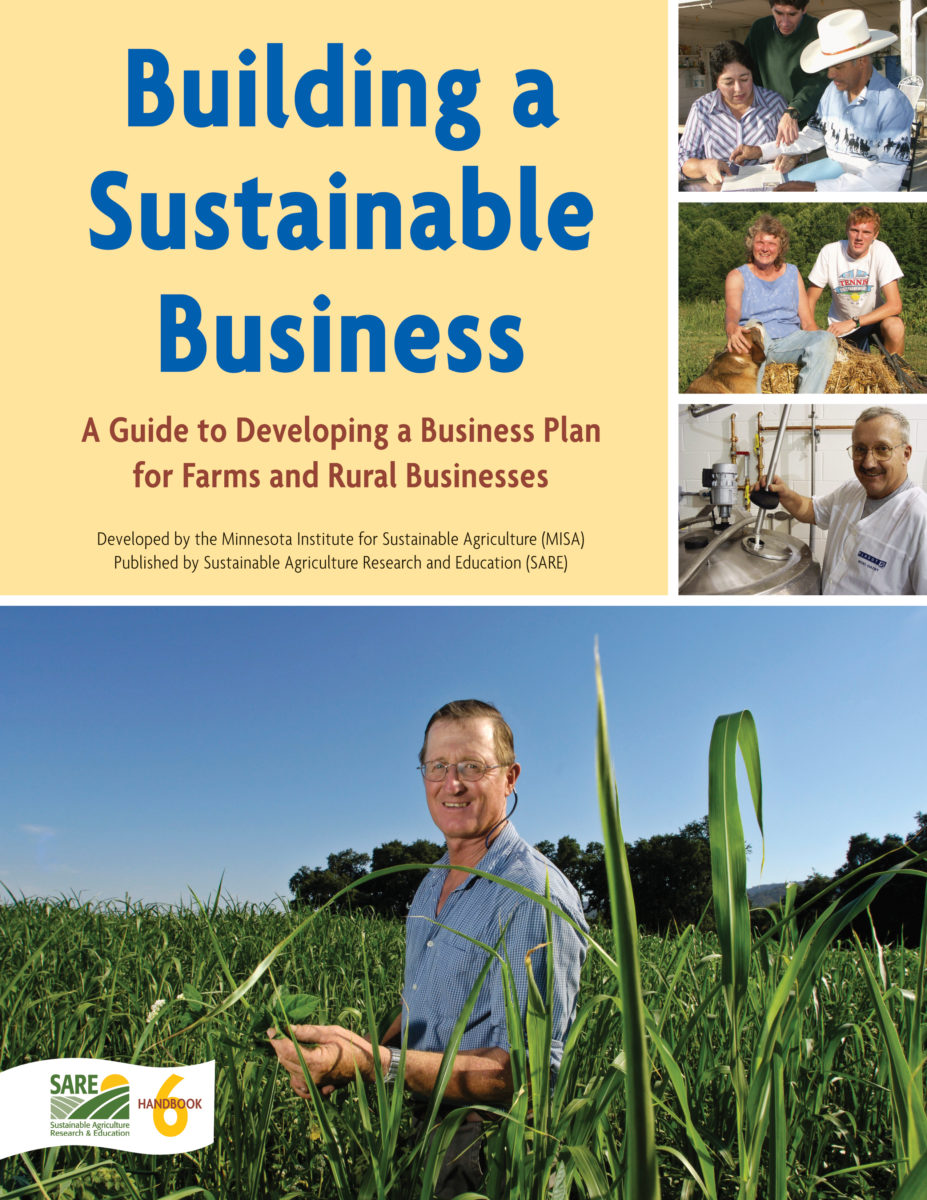Before we get into the details of how to create a business plan, let's first address some important questions about the process, including:
- What is a business plan?
- Why create a business plan?
- Who should you involve in business planning?
- When should you start the business planning process?
Some of the most important pieces of a business plan include:
What is a Business Plan?
In general, you can think of a business plan as a “roadmap to success.” It combines all of the following:
- The big-picture ideas of why you’re farming
- What you hope to achieve with your business
- How you’ll get there using resources that you have on hand
- New strategies for operations, marketing, human resources and finance
Some of the most important pieces of a business plan include:
- A formal mission statement and goals for the farm
- An inventory or assessment of your farm’s current situation
- Clear strategies for short- and long-term activities that will help you meet your goals
- A collection of documents about your business, such as budgets, cash flow statements and inventory lists, to help you make sure the plans you create are realistic and likely to succeed
A written business plan is a critical document to share with lenders, potential investors and others when you’re seeking the resources you need to make changes to your farm business.
Why Create a Business Plan?
Farms often have more than one enterprise, or revenue stream. For example, a single farm may produce many commodity crops (e.g., corn, soybeans, rye), annual specialty crops (e.g., tomatoes, carrots, peppers), fruit and nut tree crops, pastures or forage crops, and livestock (e.g., dairy, eggs, meat). In addition to crops, farms may also manage multiple related enterprises as part of their business (e.g., farm stands, autumn hayrides, or Christmas wreath sales). Each of these enterprises on a single farm can have its own revenue cycle, maintenance needs, production cycles and risks. At the same time, farms can involve many people—business partners, family members and long-time employees—who probably have different skills, interests, needs and goals.
Business planning helps you piece this information together so that you can:
- Identify and pursue your short- and long-term goals in a realistic and strategic way
- See if a particular enterprise—or the business as a whole—is a good use of your labor, equipment, natural resources and capital
- Explore new opportunities, identify possible risks to your business and respond to unexpected setbacks
- Monitor your progress toward your goals and make changes if needed
- Communicate better with potential business partners, lenders or customers
Nobody can plan for everything, but you can plan for the expected and try to anticipate the unexpected.
Who Is Involved in Business Planning?
Most farmers and ranchers don’t go at it alone. Maybe your spouse or partner, parents, siblings or children are part of the operation in some way. Or, maybe you work with non-family business partners, regular employees, shareholders or investors. The business planning process needs to include everybody who has an active interest in the farm’s day-to-day operations and its long-term success.
You’ll also want to involve special advisors during the process, depending on your needs. These advisors may include accountants, bankers, lawyers and farmer mentors. Other helpful advisors include local Extension specialists and staff from various USDA agencies, such as the Natural Resources Conservation Service, Rural Development, and the Farm Service Agency.
Disagreements about major decisions–such as what crop to plant, how to market an item or where to invest time or money–can lead to serious conflicts that prevent the farm business from succeeding. But when you include everybody in the planning process, together you can see how each person’s goals fit into the overall goals of the farm. You can also include each person’s values in the overall vision and long-term direction of the farm. This will help to:
- Make everybody feel more invested in the business
- Put each person’s skills to their best use
- Reduce the risk of conflict down the line
When a disagreement does arise, identify a neutral party who can act as a mediator. Everybody involved in the disagreement should agree on who the mediator will be, and this person should have experience in conflict resolution. Even without disagreement, a trusted mentor or advisor can help you navigate the parts of the planning process you may find difficult.
When to Start the Business Planning Process

Certainly, if you’re a beginning farmer or an experi-enced one who doesn’t already have a business plan, now is a good time to create one! It’s useful for every farmer to go through the planning process when thinking about making a major change to your operation, or if you have a critical problem you’d like to address.
Also, business planning is not a one-time activity. In general, it’s good to revisit your business plan every one or two years. In general, it's good to revisit your business plan every one or two years. Use this time to reexamine your goals or to see if the plan needs updating due to recent events that took place within or outside of your business. You’ll also see in our discus-sion of planning task 5 later in this publication that it’s important to have a system for monitoring your plan. Planning basically means putting your ideas into action, and a monitoring system allows you to see if your ideas are working.
Many things can happen, both good and bad, that can trigger the need to update your farm’s business plan. Just a few examples:
- Somebody who is deeply involved in the farm needs to cut back on their time for personal reasons, for example because they’ve had a baby or a parent’s health is declining
- An experienced, trusted manager is leaving to start a farm of their own
- A child who has been helping out is going off to college and may not return to the farm
- A new marketing opportunity appears in your area
- An enterprise has been very successful and you’re thinking about expanding it
- Natural disasters or extreme weather are hitting your farm particularly hard
How to Create a Business Plan
Your business plan should be a roadmap to managing your farm or ranch so that all its parts flow smoothly. In the following sections, we’ll summarize the five tasks of business planning. These tasks are presented in greater detail in the workbook Building a Sustainable Business. When you’re ready to dive in, use the information and worksheets in Building a Sustainable Business to complete each task.

